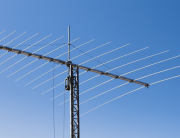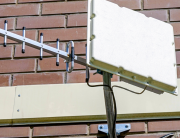Sometimes the signal bars on our phones seem almost random. One day, we’re sitting alone in a city bus station, streaming video on three bars of service without a problem. The next day, we’re at home, struggling to upload an email attachment with four bars of service. While signal strength and wireless internet speed are connected, there isn’t always a direct relationship between the two. Let’s take a closer look at signal strength and internet speed.
Signal Strength Helps You Predict Internet Speed
In most situations, you can predict internet speeds with signal bars or, better, with numerical signal strength measurements. Although the two aren’t directly correlated, there’s a practical link between signal strength, user experience of internet speeds, and estimated download speed. This table estimates the practical relationship between 4G LTE signal strength and speed:
| Signal Bars | Actual Signal Strength | User experience of internet speeds | Estimated download speed |
|---|---|---|---|
| 4 | -50 dBm to -105dBm | Strong (Clear voice and fast mobile data) | 4-80 Mbps |
| 3 | -106 dBm to -125dBm | Fair (Good voice and reliable mobile data) | 2-4 Mbps |
| 2 | -126 dBm to -136dBm | Bad (Good voice but unreliable mobile data) | 4-80 Mbps |
| 1 | -136 dBm to -140dBm | Terrible (Voice but no mobile data) | 0 Mbps |
Some Cell Towers Provide Faster Internet
Cell towers aren’t cookie-cutter copies of each other. Carriers construct towers differently based on the geography and population density of the area it needs to cover. These factors determine design features like the height of the tower, the noise factor of the terminals, and the size of the cells. They also determine the maximum download and upload speeds on the network.
Cell towers send and receive online data over set radio frequency bands. High radio frequencies are faster (which means faster internet speeds), but don’t transmit online data as far as lower frequencies. Low radio frequencies are slower, but transmit online data further. In rural areas with low population density, carriers typically sacrifice fast speeds for longer range.
Most networks transmit mobile data over the 800 MHz, 900 MHz, or 1900 MHz frequency band. The cell tower that uses the higher 1900 MHz band will have faster speeds than the tower that uses the lower 800 MHz band, even when the signal strength of both towers is the same. To find out which band the nearest cell tower uses, find out which carrier operates that tower. Then see this full list of which carriers use which bands.
On the Same Tower, Better WiFi Signal Strength Means Better Speeds
Carriers measure signal strength in decibels relative to one milliwatt (dBm), which has no direct relationship with megabits per second (Mbps) of internet speed. Because different towers have different potential speeds, it’s impossible to come up with a formula that would convert signal strength into internet speeds for all towers.
Take booster antennas, for example. People experience radically different speed gains when they connect an antenna with the same signal gain to different towers, which is why manufacturers always advertise their antenna’s signal gain and not speed gain. It’s very possible that the person next to a strong tower will get better speed gains from an antenna with 10 dB of signal gain than the person next to a weak tower using an antenna with 15 dB of gain.
Personally, though, you can be confident that better signal strength means better speeds for your fixed mobile broadband connection. If you’re purchasing an antenna, you’ll always get higher speed gains from an antenna with higher signal gains because your tower will stay the same whatever you pick. For more information about adding a cellular booster antenna to your fixed mobile broadband connection, give us a call.







Leave A Comment